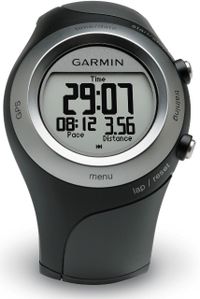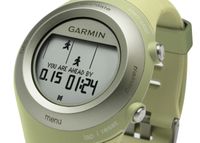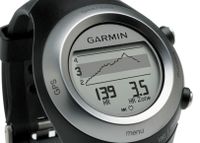Half marathon training tips from Terrence Mahon
For those of us who don’t make a career out of the event and run times that extend beyond 90 minutes, we must start to confront the greater energy demands that will be needed to get us to the finish line. This means that we must consider taking in extra carbohydrates along with our hydration needs to finish the race as fast as we started. In this latter scenario, we also need to look at a training program that incorporates some of the marathon training principles that relate to burning fats in a greater proportion than with the shorter races so that we can avoid the bonk that happens when we run out of glycogen. It is all a matter of determining what is the right effort and the correlating pace that you can sustain that will leave you enough gas in the tank to kick it in during that last mile of the race. Going out too hard or with too erratic a pace from one mile to the next means you’ll burn precious calories that cannot be found anew once the race extends beyond 70-80 minutes. Learning how to judge your pace and doing the proper preparation will lead to a higher rate of success on race day.

 One of the tools that is tremendously helpful for our team in putting all of the proper training components together for the half marathon is the Garmin Forerunner 405 watch. With the 405’s ability to monitor different fields that are all available to be on display (such as overall time, heart rate, pace, avg. speed, etc.), the watch can give the athlete constant feedback that we can monitor whether our athletes are holding a steady tempo, or whether they are going out too hard or too slow. By having the feedback of a watch that monitors the heart rate, current running pace, actual mile splits and elevation changes, it helps to put together a great map that is a phenomenal learning tool for both coach and athlete. To be able to wirelessly upload the data onto a computer and review the whole workout from multiple vantage points, be it a tempo run or a long run, we can see whether the athlete is in their right training zone to reach their goals. Starting out too hard often leads to poor back end results, but with the Forerunner, you can see the actual changes in pace, heart rate and splits and narrow it down as to how long you were able to run at a certain speed and where it then went wrong. This helps to create more reasonable training and racing goals as well as provide the data that supports what the goals actually should be for the next workout ahead.
One of the tools that is tremendously helpful for our team in putting all of the proper training components together for the half marathon is the Garmin Forerunner 405 watch. With the 405’s ability to monitor different fields that are all available to be on display (such as overall time, heart rate, pace, avg. speed, etc.), the watch can give the athlete constant feedback that we can monitor whether our athletes are holding a steady tempo, or whether they are going out too hard or too slow. By having the feedback of a watch that monitors the heart rate, current running pace, actual mile splits and elevation changes, it helps to put together a great map that is a phenomenal learning tool for both coach and athlete. To be able to wirelessly upload the data onto a computer and review the whole workout from multiple vantage points, be it a tempo run or a long run, we can see whether the athlete is in their right training zone to reach their goals. Starting out too hard often leads to poor back end results, but with the Forerunner, you can see the actual changes in pace, heart rate and splits and narrow it down as to how long you were able to run at a certain speed and where it then went wrong. This helps to create more reasonable training and racing goals as well as provide the data that supports what the goals actually should be for the next workout ahead.
 What I have noticed from using tools such as the Forerunner 405 is that I have been able to track trends in training and then make adjustments to the future workouts. By monitoring pace and heart rate I have been able to see whether the pace for a sustained effort run is hitting the right zone. If an athlete is going too fast in a sustained aerobic threshold pace run and then after 30 or 40 min their heart rate jumps as the pace slows down below the starting pace, then I know that they are burning too much sugar too fast and that the runner will not be able to sustain such a pace for the half marathon race. In this case, we go back and adjust the training speeds and then try it again for the next workout to see if we have narrowed the margin of what pace is adequate for their current level of fitness. From this important data I have come up with some new training schemes to really isolate what is needed to hit in training to be able to run well in the half marathon. Here are the key workouts that I include in our program. They are based on a 2-week training cycle that works in a progressively aggressive succession from lower volume and speeds to higher volume and speeds as the race gets closer.
What I have noticed from using tools such as the Forerunner 405 is that I have been able to track trends in training and then make adjustments to the future workouts. By monitoring pace and heart rate I have been able to see whether the pace for a sustained effort run is hitting the right zone. If an athlete is going too fast in a sustained aerobic threshold pace run and then after 30 or 40 min their heart rate jumps as the pace slows down below the starting pace, then I know that they are burning too much sugar too fast and that the runner will not be able to sustain such a pace for the half marathon race. In this case, we go back and adjust the training speeds and then try it again for the next workout to see if we have narrowed the margin of what pace is adequate for their current level of fitness. From this important data I have come up with some new training schemes to really isolate what is needed to hit in training to be able to run well in the half marathon. Here are the key workouts that I include in our program. They are based on a 2-week training cycle that works in a progressively aggressive succession from lower volume and speeds to higher volume and speeds as the race gets closer.
Workout 1: lactate (or anaerobic) threshold run
This run is a sustained effort of running that can be as short as 15 minutes and as long as 40 minutes, depending on the athlete. The goal of the run is maintain a steady heart rate as well as speed. The workout is looking to keep the heart rate within a zone of 86-89% of one’s max heart rate capacity. The pace should be within 86-89% of an athlete’s best time over 1 mile. As such, an athlete with a best 1 mile time of 6:00 and max heart rate of 192 bpm would have their goals between 6:58-6:44 pace with a heart rate zone of 165-171. As long as the athlete maintains pace and heart rate within this zone, then the workout will be an effective stimulus that will create training gains without over- or under-training. For a new runner, they can break the workout into shorter intervals with short rest. An example would be 3 x 8 min w/ 2 min rest. The more advanced athlete can push the higher end of the range by doing 2 x 20 min w/ 3 min rest as long as they are able to keep the pace and heart rate from soaring out of their top end zones.
Workout 2: aerobic threshold run
Similar to the lactate threshold run, the aerobic threshold run is a sustained effort but for a longer period of time and at a lower heart rate and relative speed. This workout typically goes from 40-90 min of non-stop running (shorter during the initial build up or for beginners and longer for those with more experience or during the last stint of hard training prior to the race) and keeps the heart rate and relative speed in a zone of 80-85% of max HR (or 1 mile time). For the same runner that has a best 1 mile time of 6 minutes, this would mean that the run should fall between 7:30-7:05 pace and have a heart rate zone of 154-163. The goal of this run is to challenge the very top end of the aerobic speed state where the body is still using an adequate amount of fats to use as a fuel source along with carbohydrates. Working within this training zone provides a tremendous callusing effect for the athlete and teaches them how to merit out their efforts over the long haul without bonking before the finish line. So often the mistake in a half marathon as well as the marathon is to start out at a pace that feels easy for the first half of the race, but then one realizes that it was much too fast a tempo to be able to sustain over the last ½ of the race. By adding the aerobic threshold runs into your routine, you can teach yourself to start at a more prudent pace and finish feeling strong. You can even up the tempo to the high end of the pace range over the last few miles to see how much you still have left in the tank. Beware of going beyond this speed (unless over the last 5 min of the workout) as the accumulation of lactic acid is high at this pace and the burning of glycogen becomes the primary fuel source. Once you are in this zone, you are on borrowed time in regard to sustaining this effort and the crash and burn is sure to come.
Workout 3: half marathon simulation
This workout has become our staple in training in regard to fin- tuning the exact pace that we are looking to shoot for on race day. This run of 8-14 miles starts with a pace that is 50-60 seconds per mile slower than goal pace and then at halfway through the run, the athlete increases the tempo to running at goal pace. An example being that a 12 mile half marathon simulation for someone with a 1:19 time goal would start with 6 miles at 7:00/mile pace and then transition into 6 miles at 6:00-6:10/mile pace. We have found that these simulations teach the best awareness of pace while running and express to the runner what it is going to feel like over the latter stages of the race to how they will feel while trying to sustain that goal pace. It helps to merit out efforts and fortify confidence in the training that they are in fact ready to hit their goal time. When an athlete can go above and beyond their goal times on workouts like these, then we know that they are ready to run fast and may even supersede their initial objective. The Garmin Forerunner 405 watch helps so that you can keep track of pace and miles, so doing a workout like this out on a relatively flat road or trail is not a problem. Of all the workouts, this one tends to be the toughest since you are actually hitting race pace for half of the run and the total volume is similar to a long run for most runners. It is best to add in an extra recovery day following these workouts to insure proper adaptation to the stress and to avoid injury from overtraining.
Workout 4: progressive pace cut down run
This run is basically a long run where you run negative splits (start slower and finish faster) from start to finish. It can be done in a variety of forms where you increase the pace every mile or every 3 miles. What matters most is that the pace starts fairly easy (as a fat burning run) and follows a gradual progression up towards finishing close to aerobic threshold speed. Because of the length of the run it is best to not go over 80-85% of max HR as the wear and tear on the body will take too long to rebound in a normal training week and the workout becomes too much like a race.
Our typical pattern for a cut down run is to plan for a 20-25k run where the pace increases every 5k from the start on to the finish. We will often start at 65-70% of max HR (which will feel very slow) and then bump it up 5% each segment to finish at 80-85% of max HR (which then feels like you are moving along pretty fast). The run finishes at or around marathon pace and not too far off of half marathon race pace so it does a good job at teaching the body how to use fuel efficiently as well as giving the athlete a tremendous amount of confidence in their strength and overall running endurance.
All of the workouts listed above will be spaced between aerobic recovery runs, short interval training to work on speed and stride length efficiency and then complete rest/regeneration days where no training will be done. How these all fit together depends on a runner’s schedule (work, school, family, etc). The 4 workouts listed above should have at least 2 days between each one. 3 days can be used as needed for those who need a little bit longer time to recover from such hard training sessions. We will typically look to get in 5 to 6 of these training cycles and then a 2-week taper phase leading up to a major half marathon. Experiment with some of these ideas and see how they can add to your current running routine.
Terrence Mahon
Head Coach & Founder, Mammoth Track Club
www.runmammoth.com
The post Half marathon training tips from Terrence Mahon appeared first on Garmin Blog.
Sample Block Quote
Praesent vestibulum congue tellus at fringilla. Curabitur vitae semper sem, eu convallis est. Cras felis nunc commodo loremous convallis vitae interdum non nisl. Maecenas ac est sit amet augue pharetra convallis nec danos.
Sample Paragraph Text
Praesent vestibulum congue tellus at fringilla. Curabitur vitae semper sem, eu convallis est. Cras felis nunc commodo eu convallis vitae interdum non nisl. Maecenas ac est sit amet augue pharetra convallis nec danos dui.
Cras suscipit quam et turpis eleifend vitae malesuada magna congue. Damus id ullamcorper neque. Sed vitae mi a mi pretium aliquet ac sed elitos. Pellentesque nulla eros accumsan quis justo at tincidunt lobortis denimes loremous. Suspendisse vestibulum lectus in lectus volutpat, ut dapibus purus pulvinar. Vestibulum sit amet auctor ipsum.

